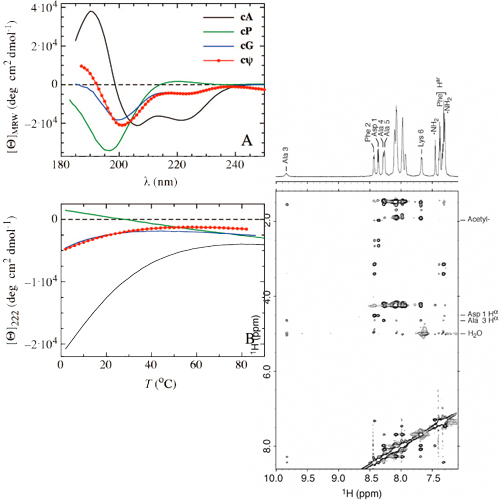Effect of Thioxopeptide Bonds on r-Helix Structure and Stability
31-May-2008
Journal of the American Chemical Society, 2008, 130, 8079-84 published on 31.05.2008
JACS, online article
Thioxoamide (thioamide) bonds are nearly isosteric substitutions for amides but have altered hydrogen-bonding and photophysical properties. They are thus well-suited backbone modifications for physicochemical studies on peptides and proteins. The effect of thioxoamides on protein structure and stability has not been subject to detailed experimental investigations up to date. We used alanine-based model peptides to test the influence of single thioxoamide bonds on R-helix structure and stability. The results from circular dichroism measurements show that thioxoamides are strongly helix-destabilizing. The effect of an oxo-to-thioxoamide backbone substitution is of similar magnitude as an alanine-to-glycine substitution resulting in a helix destabilization of about 7 kJ/mol. NMR characterization of a helical peptide with a thioxopeptide bond near the N-terminus indicates that the thioxopeptide moiety is tolerated in helical structures. The thioxoamide group is engaged in an i, i+4 hydrogen bond, arguing against the formation of a 310-helical structure as suggested for the N-termini of R-helices in general and for thioxopeptides in particular.











